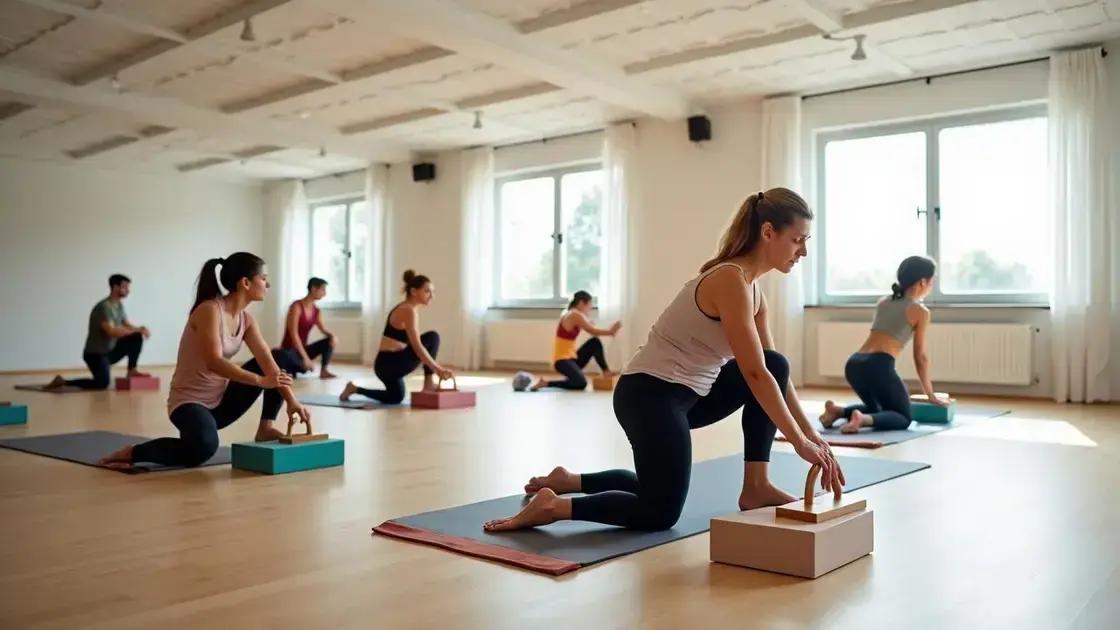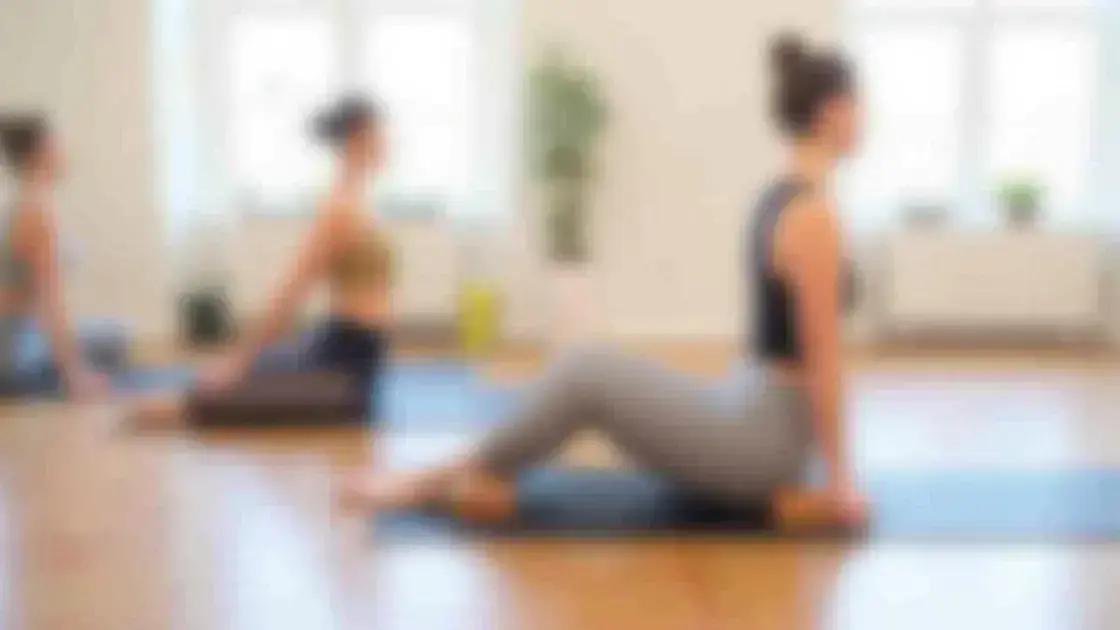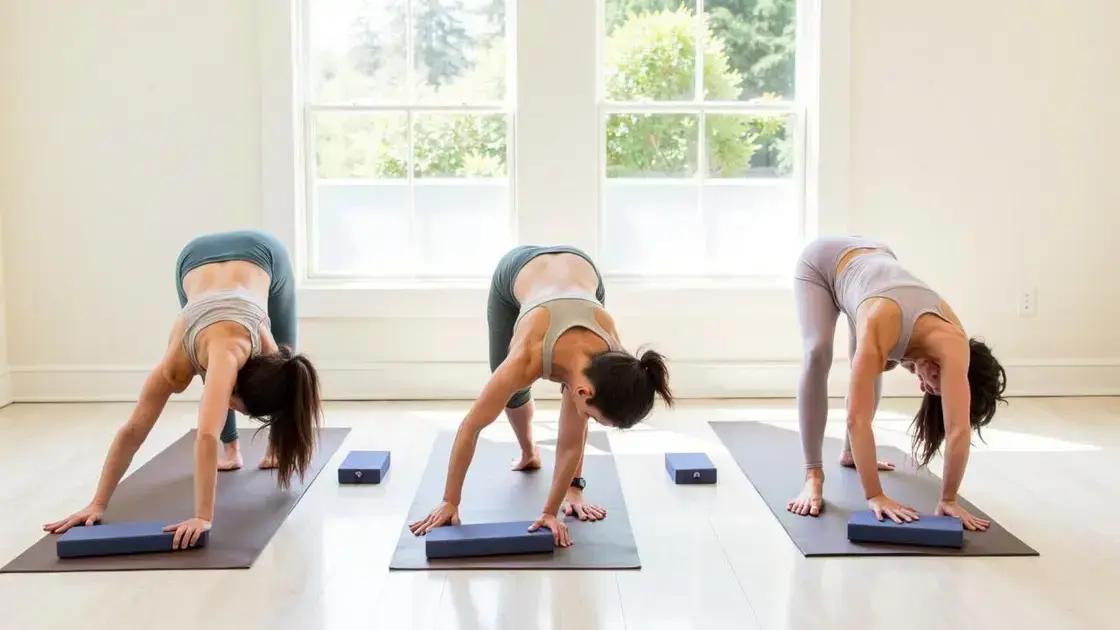Yoga blocks are essential tools for enhancing your yoga practice, providing support, improving flexibility, and ensuring proper alignment. They can be used in various poses, making yoga accessible for practitioners of all levels. Choosing the right block based on material, size, and texture will significantly help you modify your exercises effectively and safely.
Yoga blocks are essential tools that enhance your practice by providing stability and support. Whether you’re a beginner or an experienced practitioner, knowing how to use yoga blocks for modified exercises can transform your workouts and improve flexibility. In this article, we will delve into the various techniques for utilizing yoga blocks, the benefits they offer, and how they can be integrated into your regular routine for better results.
Benefits of Yoga Blocks in Modified Exercises

Using yoga blocks in modified exercises offers several benefits that can significantly enhance your practice. One of the primary advantages is increased stability. Yoga blocks provide additional support, allowing you to perform poses more comfortably and safely. This is especially helpful for beginners who may struggle with balance.
Improved Flexibility
Additionally, yoga blocks can help with flexibility. By bringing the ground closer to you, blocks enable deeper stretches without straining your body. This encourages a gradual increase in flexibility and range of motion, preventing injuries.
Enhanced Alignment
Blocks also promote proper alignment during exercises. Proper alignment is crucial in preventing injuries and achieving the full benefits of each pose. Using blocks helps ensure that your body is in the correct position, which leads to a more effective workout.
Accessibility for All Levels
Yoga blocks make yoga accessible for everyone, regardless of skill level. Whether you are a beginner or an advanced practitioner, these props allow you to modify various poses, ensuring a positive experience. By adapting exercises to fit your current level, you can build confidence and gradually progress.
Variety in Your Routine
Incorporating blocks also adds variety to your yoga routine. They can be used in many different ways, facilitating new poses and variations. This keeps your workout fresh and engaging, helping to maintain motivation in your practice.
Techniques for Using Yoga Blocks

Using yoga blocks can enhance your practice when you know the right techniques. Here are effective ways to incorporate them into your exercises.
Utilizing Blocks for Support
For poses that require balance, like Warrior III, place a block under your hands to stabilize yourself. This helps you focus on form while ensuring safety.
Bringing the Ground Closer
When doing a forward fold, use a block to bring the ground closer. This allows for a deeper stretch of the hamstrings without straining your back. By placing a block under your hands, you can maintain proper posture and gradually increase flexibility.
Enhancing Backbends
In backbending poses such as Bridge Pose, placing a block under your sacrum can help support your lower back. This creates a restorative position that encourages relaxation while still benefiting from the backbend.
Increasing Reach
Yoga blocks can serve as extensions of your body. For poses like Triangle Pose, using a block can help you reach the floor with better alignment. This allows you to enjoy the pose without compromising your body’s integrity.
Creating Stability in Seated Poses
In seated poses, placing blocks under your knees can help relieve tension in your hips. This technique encourages a more open stance in poses like Seated Forward Bend, making it easier to keep your spine straight.
Common Modifications with Yoga Blocks

Yoga blocks are versatile tools that allow for numerous modifications in various poses. Here are some common modifications you can make with yoga blocks to enhance your practice.
Downward Dog
For Downward Dog, if you find it hard to reach the ground, place a block under your hands. This modification reduces strain on the shoulders and back while keeping the alignment intact.
Triangle Pose
In Triangle Pose, when you cannot comfortably reach the floor, use a block to elevate your hand. This helps maintain the integrity of the pose and encourages proper alignment.
Seated Forward Bend
When practicing Seated Forward Bend, placing a block under your knees can relieve tension in your hips. This makes it easier to lengthen your spine and prevents overstretching.
Cobra Pose
In Cobra Pose, if you experience discomfort in your lower back, try using a block under your hands. Elevating your chest reduces pressure while allowing for a gentle backbend.
Child’s Pose
For Child’s Pose, placing a block between your legs allows for a more supported position. This helps you relax and lengthens your spine, making the pose more restorative.
Tips for Choosing the Right Yoga Block

Choosing the right yoga block can greatly enhance your practice. Here are some tips for selecting the best yoga block for your needs.
Material Matters
Yoga blocks come in various materials such as foam, cork, and wood. Foam blocks are lightweight and soft, making them a great choice for beginners. Cork blocks provide firmness and stability, ideal for those who need extra support. Wooden blocks are durable and sturdy, offering the most stability but may be heavier.
Consider the Size
When selecting a yoga block, size is important. Standard blocks are usually 9x6x4 inches. If you’re taller or have longer limbs, consider getting larger blocks. Some brands offer extra-long blocks for better reach and support.
Evaluate Your Practice Level
Your experience level will influence your choice of block. Beginners might find the softer, lightweight foam blocks easier to handle, while seasoned practitioners may prefer the support of cork or wood blocks for advanced poses.
Check the Surface Texture
The texture of the block can also impact your practice. Look for blocks with a non-slip surface for stability during poses. This is particularly important for poses where your hands or feet will be on the block.
Budget Considerations
Yoga blocks can vary in price. More expensive blocks often offer better quality and durability. However, there are many affordable options that are still effective. Set a budget and choose a block that meets your quality needs within that range.
Wrapping Up the Benefits of Yoga Blocks
Using yoga blocks for modified exercises opens up a world of possibilities for practitioners of all levels. They provide vital support, enhance flexibility, and encourage proper alignment, making yoga an accessible and enjoyable practice.
By employing various techniques and modifications, you can tailor your workout to meet your specific needs. Choosing the right block based on material, size, and texture will further enhance your experience on the mat.
Whether you are a beginner seeking to build confidence or an experienced yogi looking to deepen your practice, yoga blocks are invaluable tools for achieving greater success and comfort during your sessions.
Integrating yoga blocks into your routine can significantly improve your practice, helping you develop strength, flexibility, and mindfulness.
FAQ – Frequently Asked Questions about Yoga Blocks
What are yoga blocks used for?
Yoga blocks are used to provide support, stability, and alignment during various yoga poses, making the practice more accessible.
How do I choose the right yoga block?
Consider the material, size, texture, and your practice level. Foam blocks are great for beginners, while cork and wood offer more stability.
Can yoga blocks help me improve my flexibility?
Yes, using yoga blocks can assist you in achieving deeper stretches and maintaining proper alignment, which can enhance flexibility over time.
Are there specific poses where yoga blocks are most beneficial?
Blocks can be beneficial for a variety of poses, including Downward Dog, Triangle Pose, Seated Forward Bend, and many others, helping you modify as needed.
What materials are yoga blocks made from?
Yoga blocks are generally made from foam, cork, or wood. Each material has its own benefits, depending on your comfort and needs.
Can yoga blocks be used by beginners?
Absolutely! Yoga blocks are especially useful for beginners, offering support and helping to build confidence in various poses.












